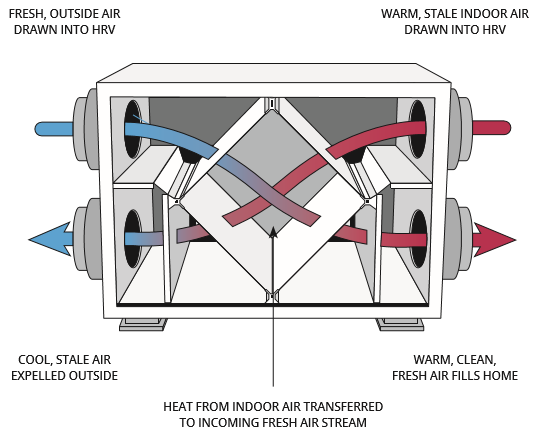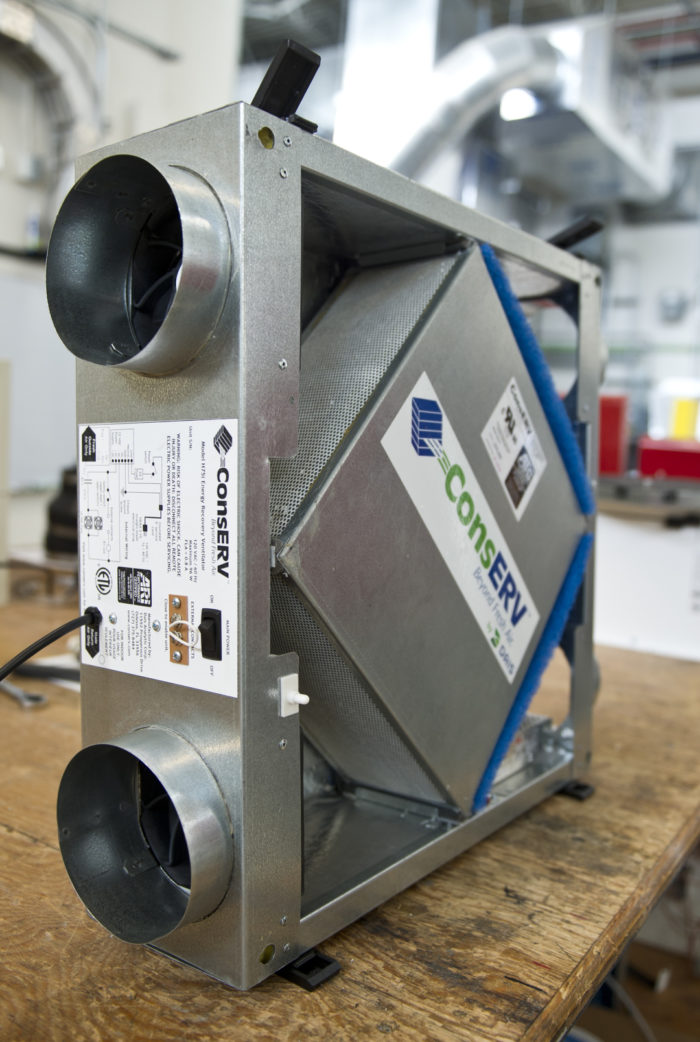Just How Heat Recovery Ventilation Boosts Indoor Air High Quality and Reduces Power Expenses
Heat Recovery Ventilation (HRV) systems play an essential duty in enhancing indoor air high quality while all at once decreasing power expenditures. By effectively trading stale indoor air with fresh outdoor air, HRVs aid maintain suitable humidity and lower contaminants. Furthermore, their capability to recuperate warmth from outward bound air minimizes the pressure on home heating and cooling down systems. As power costs remain to increase, comprehending the complete possibility of HRV systems ends up being increasingly vital for homeowners and businesses alike.
Recognizing Heat Recovery Ventilation Solutions

Heat recovery ventilation (HRV) systems play a vital duty in enhancing indoor air top quality, specifically in modern, energy-efficient structures. These systems are developed to move warm from the outward bound stale air to the inbound fresh air, thus lessening energy loss while keeping optimal temperature level degrees inside. HRVs are composed of a heat exchanger, followers, and ductwork, assisting in the continual circulation of air. By expelling interior pollutants and introducing fresh air, HRVs assist to stabilize humidity degrees, avoid mold and mildew growth, and lower allergens. The effectiveness of HRV systems depends on their capacity to recuperate as much as 80% of the warmth from the exhausted air, advertising energy conservation while making certain a healthy and balanced interior atmosphere. Their assimilation is important in attaining lasting living methods.
The Value of Indoor Air Quality
Indoor air quality (IAQ) is a crucial factor affecting the health and wellness of owners in any kind of environment. Poor IAQ can result in numerous health and wellness issues, consisting of respiratory problems, allergic reactions, and tiredness. In addition, it can aggravate present problems such as asthma. Variables adding to low IAQ include toxins from interior sources like cleaning up agents, mold and mildew, and insufficient ventilation. As a result, maintaining great IAQ is essential for promoting a secure and comfortable living or functioning space. Effective techniques to boost IAQ include regular surveillance of air top quality, correct ventilation systems, and Discover More reducing making use of hazardous compounds inside your home. By prioritizing IAQ, individuals can assure a much healthier environment that cultivates productivity and overall quality of life.
Power Performance Benefits of HRV Systems
Numerous home owners and structure managers are increasingly identifying the energy performance benefits of warm recuperation ventilation (HRV) systems. By moving warmth from worn down indoor air to inbound fresh air, HRV systems considerably reduce the power needed for home heating and air conditioning. This process reduces dependence on standard cooling and heating systems, resulting in lower energy expenses. Furthermore, HRVs aid maintain a well balanced interior climate, avoiding too much heating or cooling needs. The capacity to recover approximately 90% of the heat from outgoing air also supports sustainability initiatives by decreasing overall power usage. HRV systems contribute not only to set you back savings however likewise to a decreased carbon footprint, straightening with the expanding focus on energy-efficient structure practices.
Installment and Upkeep Considerations
The reliable implementation of warm recovery ventilation (HRV) systems calls for mindful consideration of setup and maintenance factors to ensure peak performance. Appropriate positioning of the HRV device is necessary, as it must be installed in a place that optimizes air flow while reducing noise disruption. In addition, ductwork needs to be appropriately sized and shielded to avoid energy loss. Routine maintenance, consisting of filter substitute and system cleaning, is crucial to protect ideal functionality and indoor air high quality. Owners ought to develop a routine upkeep schedule to recognize and address possible concerns before they intensify. Partnership with skilled professionals throughout both installment and upkeep stages can enhance the long life and performance of HRV systems, eventually resulting in far better interior settings and reduced energy costs.
Real-World Applications and Success Stories
Discovering real-world applications of warmth recuperation ventilation (HRV) systems helpful resources reveals their substantial influence on indoor air quality and energy effectiveness throughout different settings. In domestic structures, homeowners have actually reported better air high quality, resulting in fewer allergies and respiratory system issues. Schools carrying out HRV systems have noted improved student concentration and lowered absence because of far better air flow. Industrial structures, such as workplaces and retail rooms, have actually experienced reduced power expenses and boosted staff member performance. For circumstances, a corporate workplace in a temperate climate accomplished a 30% decrease in power expenses after setting up an HRV system. These success stories show that HRV modern technology not just adds to healthier atmospheres yet likewise supplies concrete financial advantages, making it an important investment for different industries.
Regularly Asked Inquiries
Can HRV Solutions Reduce Allergens in Indoor Air?
The effectiveness of HRV systems in reducing indoor irritants largely pivots on their capacity to filter and exchange air. HRV Heat Recovery Ventilation. By continually changing stagnant air, these systems can greatly lower allergen levels throughout interior atmospheres

Exactly How Does Moisture Affect HRV System Performance?
Moisture substantially influences HRV system efficiency; high degrees can bring about condensation, reducing effectiveness, while reduced moisture might improve air exchange. Balancing moisture is crucial for perfect procedure and preserving indoor air their website high quality.
Are HRV Systems Noisy Throughout Procedure?
HRV systems can create varying noise degrees throughout procedure, relying on their layout and installment. Some systems operate silently, while others might create noticeable noise, particularly at higher air movement setups or when poorly maintained.
What Is the Typical Lifespan of an HRV System?

Can HRV Systems Be Made Use Of in All Environments?
HRV systems can be utilized in different environments, however their performance may vary - HRV Heat Recovery Ventilation. In extreme temperatures, adjustments or supplementary systems could be required to ensure optimal efficiency and convenience while keeping interior air quality